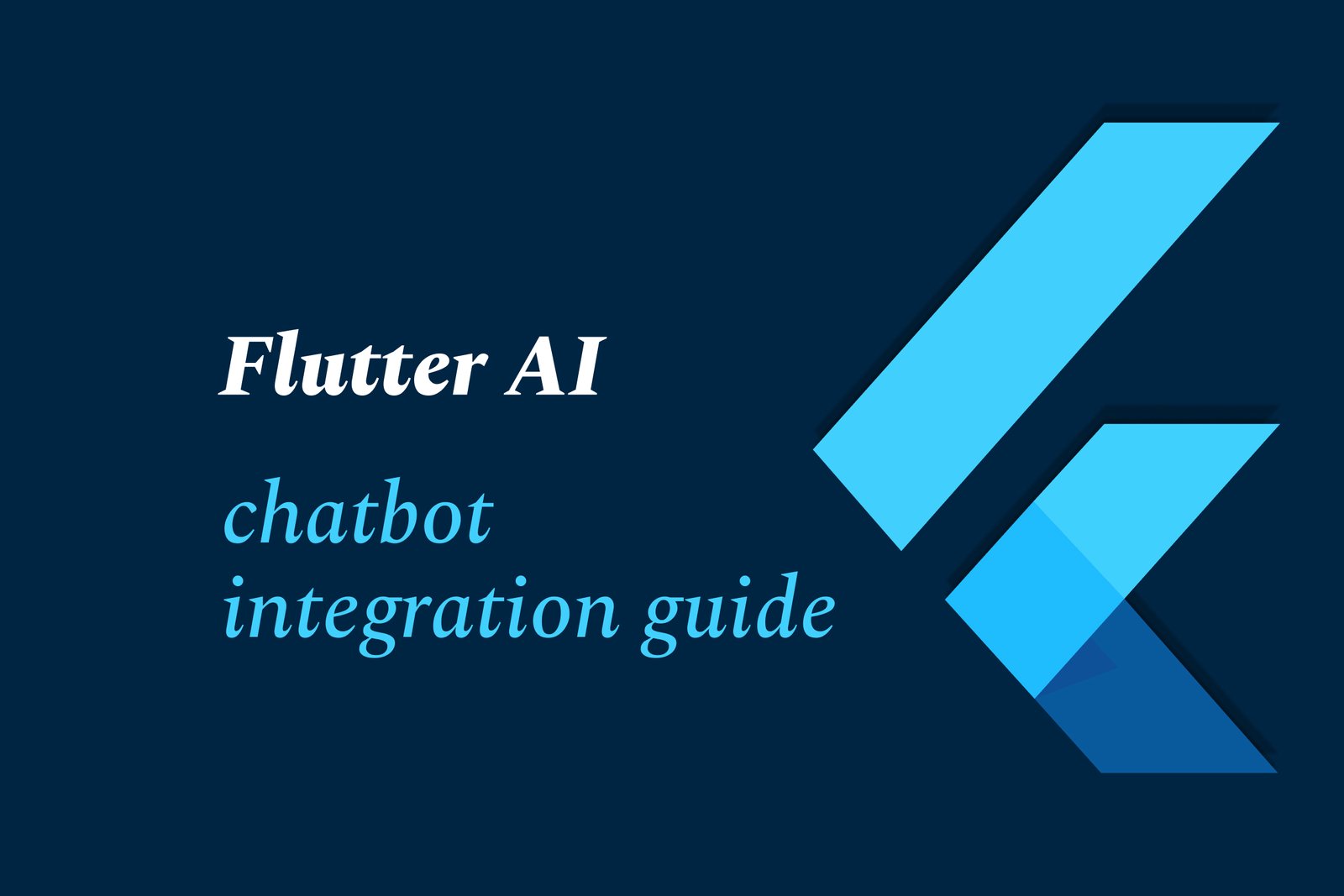Flutter AI Chatbot Integration Guide
Flutter AI chatbot integration guide explains how to seamlessly add intelligent, conversational AI chatbots into Flutter apps using tools like ChatGPT, Kore.ai, Stream Chat SDK, and Google Gemini API, enabling interactive user experiences with minimal coding.
Flutter AI chatbot integration guide
1 ) Introduction to Chatbot Integration with Flutter
Chatbots are widely used for instant customer support.
Building chatbots from scratch is complex and time consuming.
Integration with advanced AI models like ChatGPT simplifies this.
ChatGPT (gpt 3.5 turbo) offers fast, accurate, and cost effective conversational abilities.
FlutterFlow is a low code platform that aids building cross platform apps visually.
Combining FlutterFlow and ChatGPT enables quick chatbot development.
2 ) Integrating ChatGPT with FlutterFlow: Step by Step
Understand the ChatGPT API basics, specifically the Chat Completion API for conversation.
Use the OpenAI API endpoint to send and receive chatbot messages.
Implement API calls within FlutterFlow to communicate with ChatGPT.
Learn to create conversational flows with custom UI in FlutterFlow.
Manage API keys securely and handle responses within the app interface.
3 ) Alternative Chatbot Integrations in Flutter
Kore.ai chatbot plugin can be integrated into Flutter apps via method channels.
Steps:
Add Kore.ai plugin dependency in `pubspec.yaml` with local path.
Create a method channel in Flutter with name `'kore.botsdk/chatbot'`.
Implement method call handler to open chatbot window from Flutter.
Handle callbacks in JSON format for events like error, bot connection, bot closure.
iOS native code adjustments include adding observers for callback notifications in `AppDelegate.swift`.
4 ) Using Stream Chat SDK with Flutter for AI Chatbots
Stream Chat SDK provides robust solutions for real time chat applications.
Add `stream_chat_flutter` package dependency in Flutter project.
Initialize StreamChatClient with an API key.
Connect users and pass client to top level StreamChat widget.
This enables rich chat features and easy customizations.
Supports AI bot integration using Stream’s chatbot UI components.
5 ) Building Specialized Chatbots with Google Gemini API and Flutter AI Toolkit
Gemini API supports multi modal input (text, audio, images).
Flutter AI Toolkit offers widgets and APIs to integrate Gemini AI models easily.
Helps build intelligent, domain specific chatbots like medical assistants.
Setup involves:
Obtaining Gemini API key from Google AI Studio.
Adding Dart packages like `flutter_ai_toolkit` and `google_generative_ai`.
Implementing conversational UI supporting multi turn dialogue and streaming responses.
6 ) Best Practices and Considerations
Securely manage API keys and user data privacy.
Handle native platform callbacks carefully for a seamless user experience.
Customize chatbot UI to align with app branding.
Monitor connection states and error events for robustness.
Optimize cost by selecting efficient AI models like gpt 3.5 turbo.
Future enhancements can include multimodal inputs, streaming responses, and speech to text integration.
Summary
Integrating AI chatbots into Flutter apps empowers developers to build highly interactive, conversational interfaces with minimal effort. Using ChatGPT via FlutterFlow offers a straightforward low code solution. Alternatively, Kore.ai plugin and Stream’s Flutter SDK provide ready made integrations for advanced use cases. Google’s Gemini API with Flutter AI Toolkit enables building domain specific, multimodal chatbots. Following best practices in API usage, native integration, and UI customization ensures a smooth and powerful chatbot experience in Flutter applications.
https://justacademy.in/news-detail/new-features-in-flutter-4.0-stable
https://justacademy.in/news-detail/flutter-sdk-updates-in-july-2025
https://justacademy.in/news-detail/why-flutter-developers-are-in-high-demand-in-india
https://justacademy.in/news-detail/flutter-roadmap-beyond-2025
https://justacademy.in/news-detail/best-flutter-practices-every-developer-should-follow
Related Posts
In 2025, top Angular libraries offer modern, feature-rich components and tools for building dynamic web apps. From powerful data grids to low-code platforms like UI Bakery, these libraries enhance development speed, UI design, and scalability, making them essential for Angular developers.
Migrating from AngularJS to Angular 17 involves gradually upgrading your app by running both frameworks together using tools like ngUpgrade, rewriting components in TypeScript, and adopting Angular’s modern architecture to enhance performance, maintainability, and long-term support.
Angular state management tools help organize and handle app data efficiently, improving scalability and maintainability. Popular options include NgRx for robust, RxJS-based patterns, and newer Signal Store solutions that offer simpler, reactive approaches integrated tightly with Angular’s latest features.
RxJS in Angular empowers developers to manage asynchronous data streams with powerful operators like `forkJoin`, `combineLatest`, and `zip`. Mastering these key operators in 2025 is essential for building efficient, reactive applications that handle complex event sequences seamlessly.
Angular performance optimization in 2025 focuses on improving app speed and responsiveness by using techniques like OnPush change detection, lazy loading, efficient data caching, and AOT compilation. These practices reduce load times, enhance user experience, and ensure scalable, fast Angular applications.
In 2025, Angular remains preferred for large-scale, enterprise apps with its robust, all-in-one framework, while Vue attracts developers seeking simplicity and fast development for smaller projects. Both frameworks excel, with choice driven by project needs and team expertise.
Angular Signals are a new reactive primitive in Angular 16 that enable fine-grained, efficient change detection by automatically tracking dependencies and updating only affected parts of the UI. They simplify state management and boost app performance, revolutionizing Angular's reactivity model.
Angular interview questions to prepare in 2025 focus on core concepts like components, directives, data binding, routing, and dependency injection, along with TypeScript mastery and latest Angular features to ensure strong practical knowledge for building scalable, efficient web applications.
AngularJS reached its official end of support in January 2022, meaning no further updates or security patches. To ensure app security and performance, developers should consider migrating to modern Angular versions or seek third-party long-term support options if immediate migration isn’t possible.
The Angular Roadmap 2025 highlights upcoming features focused on improving developer experience and performance, including zoneless Angular, Signals integration, enhanced Forms, async data handling, improved HMR, and expanded Angular Material/CDK enhancements, driving modern, efficient web app development.










